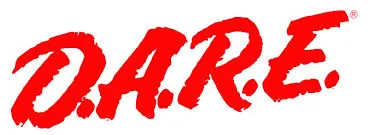
Drugs seem to be everywhere in the US, and they certainly cause lots of problems in the states, the largest one being criminal activity, second to tax evasion. The drugs themselves aren't actually the problem, but our government, like always, has taken the easy way out by making drugs that they declare "harmful" illegal, and by brainwashing our children that all substances cannot be used responsibly. This poorly composed system has caused even more harm than it was created to prevent, and if we don't change the way we teach, even more problems could arise.
How D.A.R.E. and Similar Programs Cause Issues
If you've ever visited a site for one of these programs or attended a school where these programs were used, you know that the main message conveyed is that all drugs are bad for you. Moreover, if you look at any of the outside sources they lead to poorly conducted studies, other articles on the website, or opinionated articles not based on reliable sources. The tactics used by these programs essentially scare kids away from using drugs, and it works very well-- for about a year. As these young children mature, they learn to use resources like Google to research substances, and they often discover that they've been fed lies about drugs all of their lives. Once adolescents learn the safety profile of these drugs, they often begin experimenting with soft drugs, usually cannabis or similar substances; but this is where the real problem happens. Because they realize that the program was untruthful, they may assume that harder drugs carry the same profile as soft drugs, and hard drugs such as alcohol are often cheaper, stay in the body for less time, and induce a repeatably enjoyable experience. Addiction occurs not because the drug is "too strong" or "naturally dangerous", it occurs because the user is unprepared for the effects or cravings the drug can cause if used irresponsibly or too often; DARE does not share safe dosages for substances, they only discourage their use in general. This misinformation can result in catastrophic damage to a person's well-being, and can essentially ruin a students future.
Legality of Substances
Drug abuse education programs in schools only typically educate students on how illegal drugs are harmful, including units or articles for individual illegal substances that are commonly associated with abuse. Alcohol is also covered in these programs, but it can be interpreted that these programs are only instructing students to not drink while they are underage. This is also a large problem because legal drugs can often be more dangerous than the illegal drugs portrayed as monsters by these programs. Easily attainable substances such as Alcohol, Diphenhydramine, Dextromethorphan, prescription medications like Ritalin, and more can easily cause more damage than illegal substances, but they are left out of the program because they are legal.
The Addict Mindset
DARE tends to portray drug addicts as mentally weak figures who cannot function in society; this is simply unethical. Many drug addicts are able to recover with proper counseling, and usually have a very valid reason for becoming addicted in the first place, often because they are unable to find happiness in their normal life. This false portrayal of addiction may lead students to believe that once they do a certain substance they will become addicted, and this very belief can cause them to overuse a substance, thinking that they are already addicted and there is nothing they can do. About 23% of people who use heroin will become addicted. This means that around 4/5 of the people who try a drug portrayed as dangerous by society are able simply not try it again; furthermore, heroin is usually only used by people who are already addicted to opiate medications, so it naturally has a higher addiction potential. The idea that "you will never come back" from a drug addiction is downright wrong. Using a substance does not mean one will become addicted, and drug abuse programs exaggerate the idea of addiction.
The Solution
There is a very simple solution to this problem-- harm reduction programs. If we show students the real dangers of irresponsible use, as well as how to use substances safely then we can stop the drug epidemic using facts and legitimate claims. Just think of how the sex education program has changed; now we have nearly eliminated HIV and AIDS in America. Teachers assume that every kid is going to have sex at some point in their lives, and they should also assume that every kid is going to use susbatnces in their lives. If a similar approach is taken to drug education, we will likely see a decrease in drug-related issues in young students, and even in society in general.